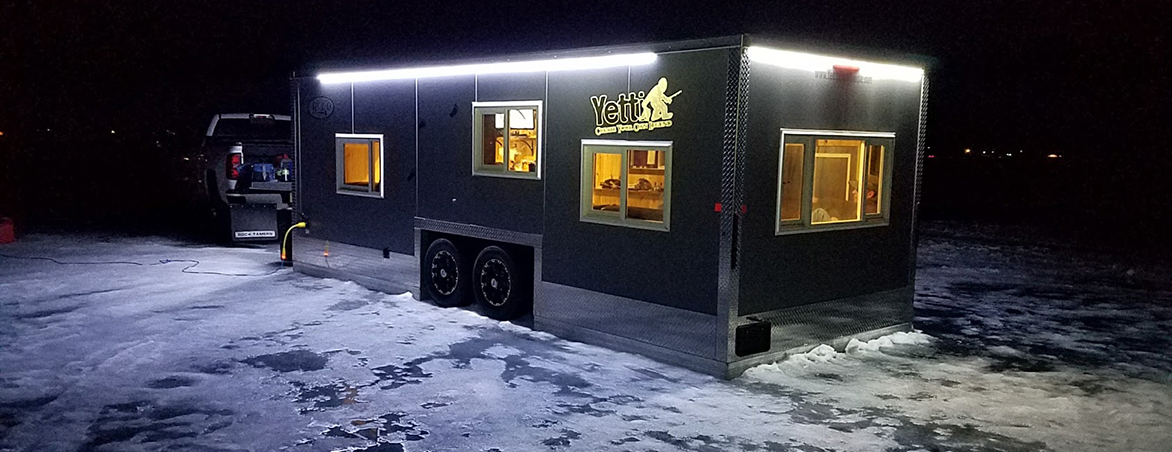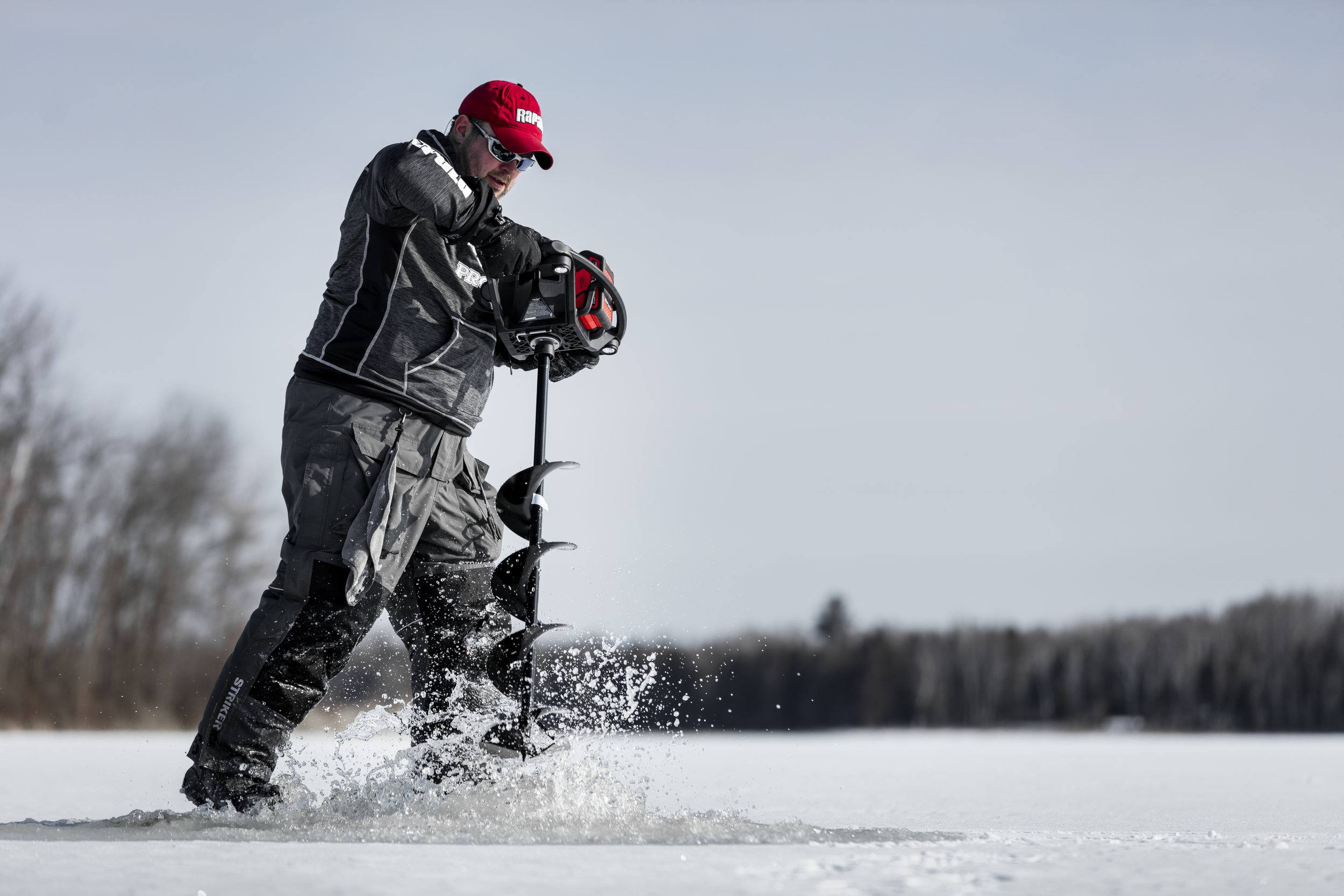The wheelhouse market has exploded in recent years, giving way to some really comfortable fishing and even year-round fun. That said, the options these days are endless, as can be the price tag, so it’s up to you to do the homework and get the most bang for your buck. I recently put in an order for my own wheelhouse, and know from experience that settling in on a few key purchase points will help make the process go more smoothly. Not only will you fish better, you’ll sleep easier knowing that no matter what part of the buying spectrum you bought in at you’ll be getting the most you can for the money.
Size– It’s easy to say that you’ll want the biggest house on the block, but think long and hard about how you fish. While an smaller model may fit the budget better, my dealer tells me that there’s a good percentage of buyers that trade back in for bigger houses a year or two down the road. If you’re already on the fence regarding how big you’ll go, you may want to err on the larger sizes. Tandem axle trailers, though scary to some, offer a good degree of comfortable trailering on-the-road, and offer larger capacities in terms of weight and storage when in use.
Structure - While you’re at it, what’s the frame made out of? Steel and wood are cheaper, but they also rust and rot. Aluminum frames and body make for a much lighter and potentially more rigid shell, while solving many of the ongoing maintenance concerns to the backbone of your trailer. Speaking of ongoing, a 3-5 year warranty should be standard for any well-made wheelhouse, but all the warranty in the world won’t make much difference if the company folds. That’s why I’d recommend going with an experienced manufacturer who’ll be around to answer the phone down the road if you have questions or issues.
Resale – This is confusing to many people, as the last thing on anyone’s mind when considering a big wheelhouse purchase is when or how they’ll be selling it. That said, the longtime saying regarding the first and last day of a boat’s ownership is the best really also applies here. Any big-ticket item like this will have a sunset date, and if you’re unsure as to when that may occur, it really behooves you to spend up on quality in the event you do own it for many, many years. Just like any bit of modern technology, the better you buy at the outset, the less outdated you’ll be in years to come. The good part is that Craigslist, Facebook ads, and dealership visits can give you a great picture of what resale may be 3 years, 5 years, or more down the road.
Quality - A good start is to look for fine craftsmanship inside and out. Is the interior wood finished, the floor insulated, and wiring connections soldered and heat-shrunk? Many wheelhouses offer what appear to be ample storage and cupboard space, but open the doors and you’ll find plumbing and heating equipment, pipes, and electrical runs. Another place to look are the windows, of which any old Recreational Vehicle (RV) design is fine until it’s 20 below and condensation with re-freeze disallows you actually using them to vent. Look for home-quality glass and substantially built offerings from all wall fixtures, shelves, cabinets, doors and windows.
Versatility – I’m a firm believer that with the cost of any wheelhouse these days, it better be just as good in the summer as it is in the winter. To that end, you’re looking for many features found in the latest RV’s, which includes an installed Air Conditioning unit on top. Many models come wired for it, but know that to make it truly flexible for all seasons you’ll likely want it cooled. If you need to haul an ATV, UTV, or other items, consider a drop-door in the rear that’ll allow you to drive into your “toy-hauler.”
RV Certification - It's a little-known fact that summer use of a wheelhouse can be limited depending on whether or not your unit is RVIA (Recreational Vehicle Industry Association) certified. Depending on the municipality, along with state and local regulations, some campgrounds may not permit the use of non-RV-certified wheelhouses. This is because RV-certified house manufacturers are subject to random inspections, and adhere to codes that cover electric, plumbing, brake lights, heating and fire safety. Ultimately, if you're interested in parking your fish-house on more than just ice, this could be a big part of your purchasing decision that is both convenient and protective.
Storage and Carrying Capacity – Storage is what really sets these wheelhouses apart, as you’ll often be packing for extended stays with multiple people. Keeping organized on ice is a key to your fishing success when dodging all of the items your average hotel room contains, so well thought-out options that fully utilize the whole space are a premium. So is the vehicle weight rating. If you’ll be using this house in the summer as a “toy-hauler” you need to figure in the weight of the unit you’re hauling, plus gear, RV water and/or waste tanks.
Dealership – Shopping for the right dealer can be as important as the actual purchase of your wheelhouse, as working with someone local and trustworthy is both convenient and crucial to this process. A good dealer works with product-lines that have a strong support network, with both dealer and brand supporting one another before AND after the sale. Use common sense, and see how dealers react to the questions you pose. If they’re defensive, have excuses, or otherwise don’t address your concerns, chances are they’re not someone you should consider doing business with.
Price vs. Value – For most, this is where the rubber meets the road, and getting what you pay for is evident in a number of ways. The trick is evaluating these options, and determining what you can and cannot do without. In other words, I found that similar to a boat purchase, you get what you pay for. Often, extra dollars invested in the front end reap rewards several-fold in terms of trouble-free service, longer-lasting products, and higher re-sale value when you eventually go to sell it. Needs change constantly as our families, fishing, and lifestyles adapt, and it helps to go into this process knowing that you can always sell, upgrade, or trade-in to fit the needs of the future. That is, provided you’re buying in a popular brand, model, and size such that you’ll always have the opportunity to get out from under it should anything change. For that reason, I’m a strong proponent in buying reputable, well-built equipment with a strong warranty and track record. Treat it well, and you’ll have a wheelhouse that serves you well and maintains value over time no matter how you use it.





